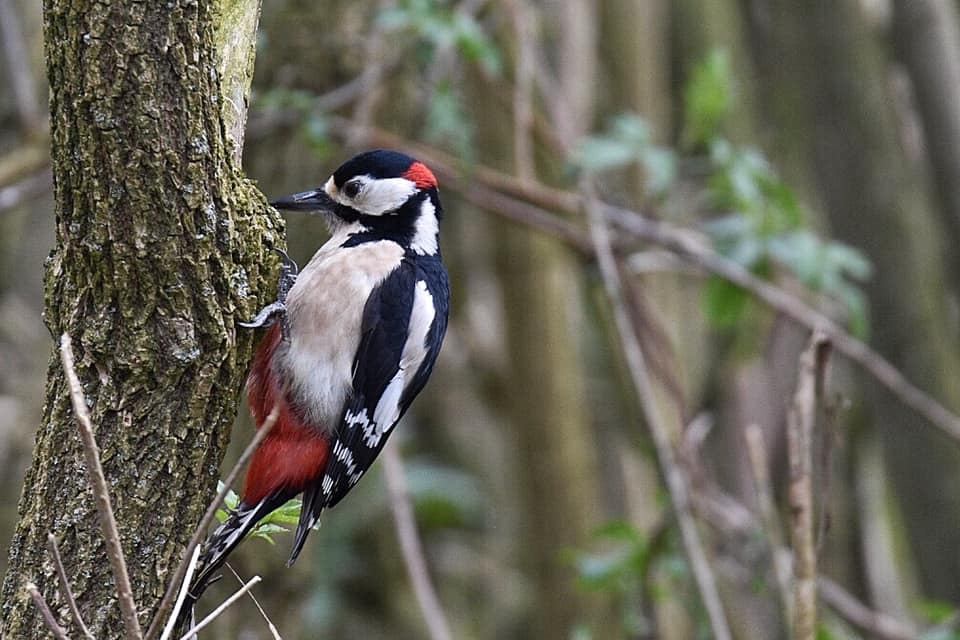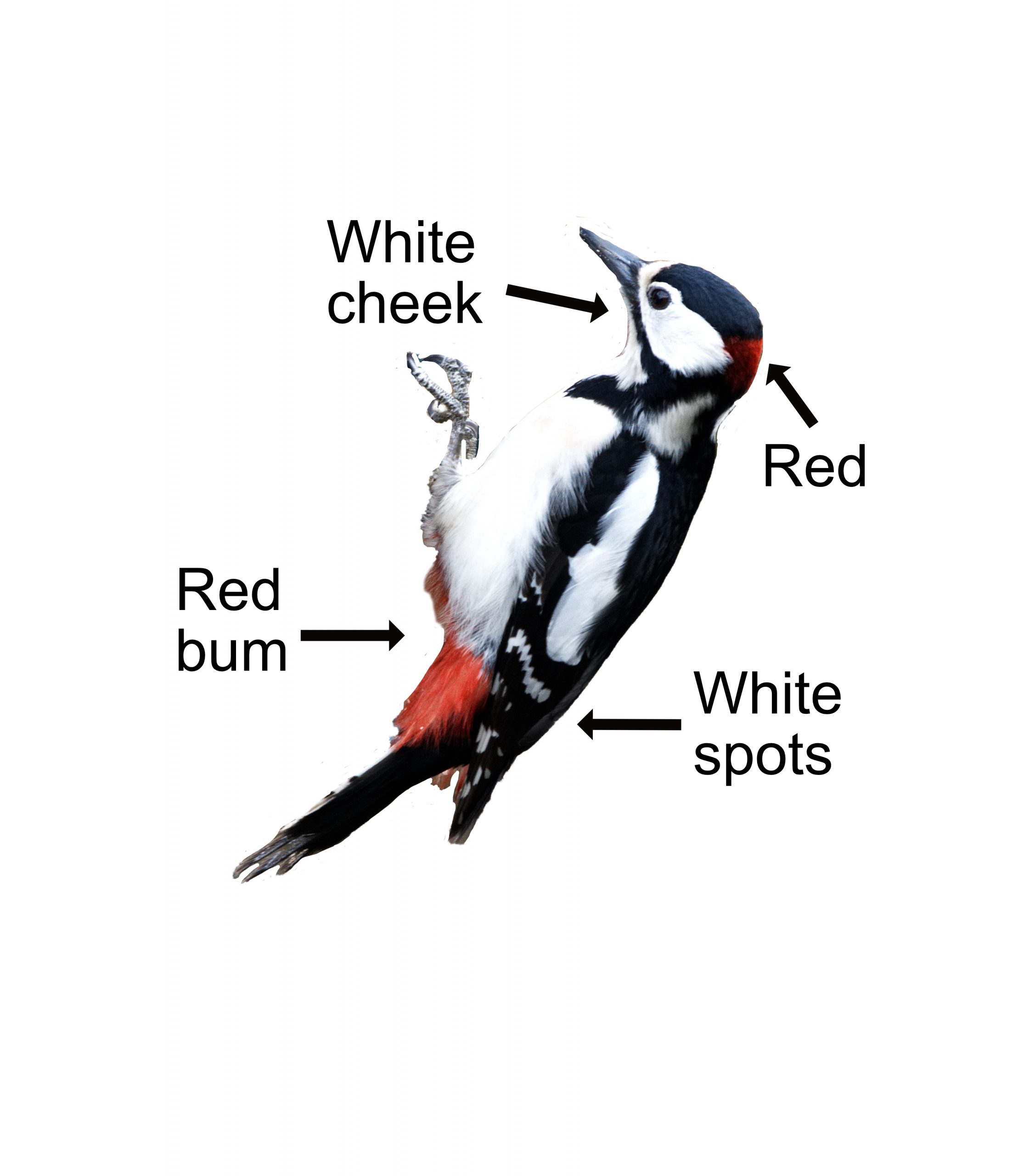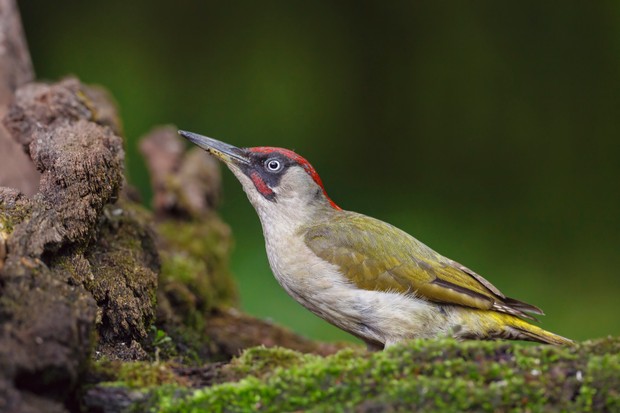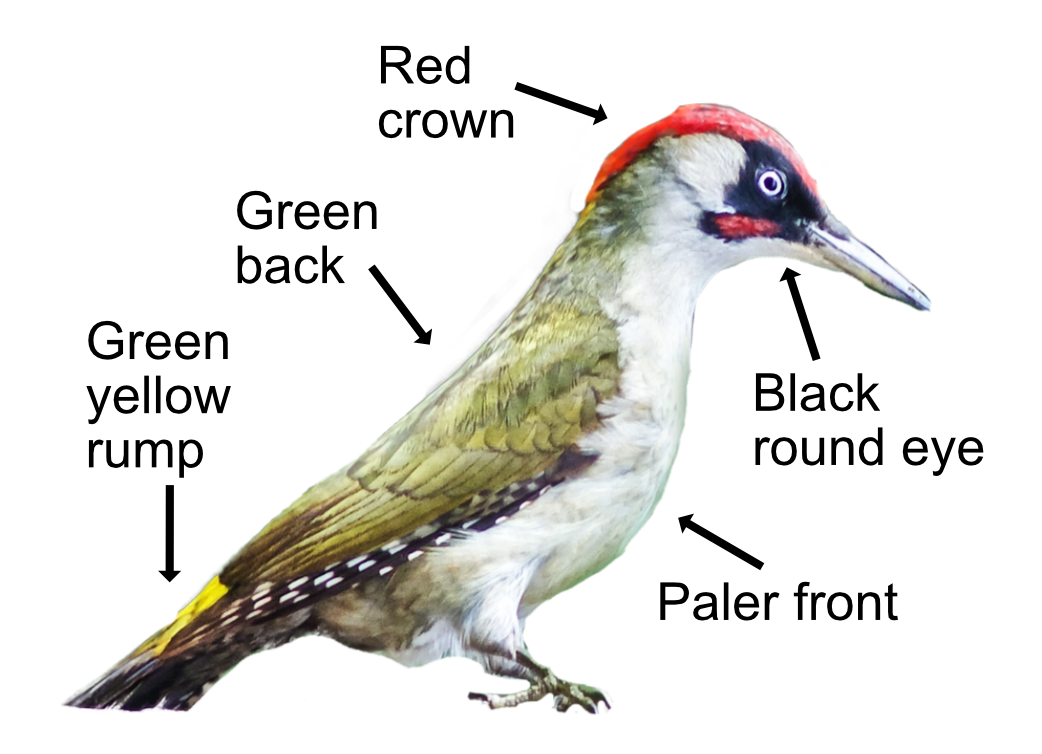
The Spotted Woodpeckers are the snazzy dressers of the woodland birds. The Lesser ones are very rare and differ only by not having a red bum and being smaller. Let's concentrate on the Great Spotted and their outrageous dress sense. It is called disruptive camouflage. It is not meant to blend in, but to confuse the eye (as opposed to colour matching camouflage where you blend in with your surroundings). You would have thought something that is black and white with a bright red rear end would stick out lick a sore thumb, but they don't. That's disruptive camouflage for you!
The Great Spotted Woodpecker despite the 'great' is smaller than a blackbird. It is just that it is bigger than the Lesser one. The 'great' is just trying to sound more impressive. They are black and white, with a red bum and red on the back of the head, with white cheeks separated from a white throat and neck by black lines, and white spots on their wings. They have large white patches on their shoulders which are most visible when flying.

The Great Spotted Woodpecker has a zooming undulating flight and closes its wings completely every few flaps to look like a smartly dressed flying torpedo in a tuxedo. They climb trees in a series of hops using their stiff tail feathers (coat tails) pressed against the tree for support.
Their main call is a distinctive "pic" as in 'picky' or 'take my pic'. Once you recognise it, you will hear this dapper bird of the woods everywhere. The more widely recognised 'song' is the 5 seconds of drumming against a branch with their bill to get a bit of attention. The woodpecker has unique muscles and bones in the head and neck to allow them to use their bill like a pneumatic drill to chisel out nest holes ('drumming'). They can also use their pneumatic drill to hammer open tough nuts.
You seldom see Spotted Woodpeckers on the ground. They feed on insects, nuts, seeds, and berries so you may be lucky and get them on your garden feeder. They have a tongue that can stick out 4cm beyond their bills to get at things in crevices and to blow raspberries at the duller dressed birds. They also pinch eggs and even the youngsters of other birds, which is rather nasty for a swanky dresser. They will even chisel out the hole in a nest box to get in and grab the tasty chicks inside. That is why some nest boxes have a metal plate round the hole to put them off.
In courtship, the love-struck Spotted Woodpeckers engage in noisy chases among the trees. Nesting begins in April. Both parents help to make the nest hole where the average nest chamber is 28cm deep. 4-7 eggs are laid which hatch after 13 days. The young fly after 20 days and stay with mum and dad for 7 more days before going off on their own - to find a good tailor. You are most likely to see them in your garden in June when they bring their youngsters along to teach them to feed on the bird feeders.
Great Spotted Woodpeckers can be found where there are trees big enough for a decent nest hole. So moorland, tops of mountains, and the fens are off the list as trees are hard to come by there. They are generally resident. Northern birds may 'erupt' down south when food is in short supply. There are about 50,000 Great Spotted Woodpeckers in Britain and their population is rising. Their Latin name is ’dendrocopos major’, ’major’ meaning great and ’dendrocopos’ from a combination of the Greek words ’dendron’ for 'tree', and ’kopos’ for 'striking'. So a big tree striker as opposed to great looking in black.





